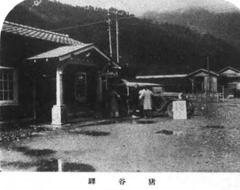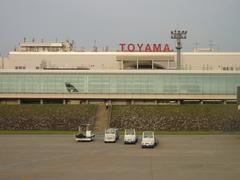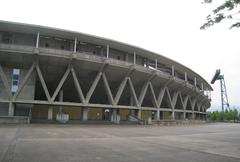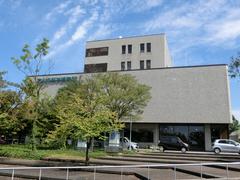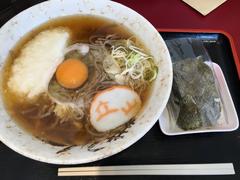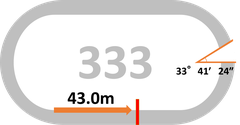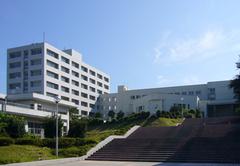
Toyama Interchange Visiting Guide: Visiting Hours, Tickets, and Nearby Attractions
Date: 04/07/2025
Introduction
Nestled between the Sea of Japan and the towering Northern Japan Alps, Toyama Prefecture is a mosaic of history, culture, and spectacular nature. At the heart of this region, the Toyama Interchange (富山インターチェンジ) serves as a pivotal gateway, connecting travelers to Toyama City and the wider Hokuriku area via the Hokuriku Expressway. More than just a transportation hub, the interchange provides convenient access to historical landmarks like Toyama Castle, the awe-inspiring Tateyama Kurobe Alpine Route, and a wealth of cultural and natural attractions. This guide offers comprehensive information on visiting hours, ticketing, transportation, and nearby sights, ensuring a seamless and unforgettable experience in Toyama.
For additional planning resources, refer to the Toyama City Tourism Association, Japan Travel, and Japan Guide.
Contents
- Historical Background of Toyama
- Toyama Interchange: Gateway and Facilities
- Key Attractions Near Toyama Interchange
- Practical Visitor Information
- Cultural and Culinary Highlights
- Visitor Experience and Travel Tips
- Frequently Asked Questions (FAQ)
- Conclusion & Call to Action
- References
Historical Background of Toyama
Feudal Foundations and Cultural Flourishing
Toyama’s roots trace back to the mid-16th century with the construction of Toyama Castle in 1543, establishing the city as a strategic stronghold during the Sengoku Period (Japan Travel; Toyama City Tourism Association). During the Edo Period, Toyama developed as a center for medicine, washi (traditional paper) production, and religious pilgrimage, drawing visitors to the revered Mt. Tateyama. The city’s cultural tapestry was further enriched by literary figures such as Matsuo Basho, who immortalized Toyama in his haiku travelogues.
Modern Growth and Urban Innovation
Postwar recovery spurred Toyama’s embrace of sustainability and innovation. The city is now renowned for Japan’s first complete light rail system and eco-friendly tram networks, positioning it at the forefront of green urban mobility (Toyama City Tourism Association). The glass industry, originating from medicinal bottle production, thrives today, with the Toyama Glass Art Museum as a modern cultural highlight.
Toyama Interchange: Gateway and Facilities
Strategic Importance
The Toyama Interchange on the Hokuriku Expressway is a key access point for travelers arriving by car or bus. It’s a vital connector between Toyama, Kanazawa, Niigata, Nagoya, and beyond (Japan Travel Navitime).
Operating Hours & Facilities
- Access: Open 24/7 for vehicular traffic.
- Service Areas: Generally open 7:00 AM–9:00 PM (hours may vary by season).
- Tolls: Payment required via ETC card or cash at booths.
- Amenities: Restrooms, convenience stores, souvenir shops, parking for cars and buses, and nearby rental car agencies.
Key Attractions Near Toyama Interchange
Toyama Castle & Castle Park
- History: Originally built in 1543; reconstructed in 1954.
- Museum Hours: 9:00 AM–5:00 PM (last admission 4:30 PM), closed Dec 29–Jan 3.
- Admission: 300 yen adults, 150 yen children.
- Highlights: Castle tower, moat, Folk Museum, cherry blossoms in spring (Japan Guide).
- Access: 10–15 minutes by tram or taxi from Toyama Station; parking available nearby.
Toyama Glass Art Museum
- Location: 10 minutes by car from the interchange.
- Design: Striking contemporary architecture by Kengo Kuma.
- Hours: 9:30 AM–6:00 PM, open year-round.
- Admission: 200–700 yen depending on exhibition (JAL Japan Travel).
Kansui Park
- Features: Scenic canal, Tenmon-kyo Bridge, famed Starbucks.
- Distance: About 15 minutes from the interchange.
Tateyama Kurobe Alpine Route
- Overview: Spectacular mountain route renowned for snow walls and alpine views.
- Season: Mid-April to late November (check exact dates).
- Hours: 7:00 AM–6:00 PM.
- Tickets: ~9,650 yen one-way for adults; book online or at Dentetsu-Toyama Station (Japan Guide).
- Travel: Via local transit/taxi to Dentetsu-Toyama Station, then Toyama Chiho Railway to Tateyama Station.
Gokayama Historic Villages
- UNESCO World Heritage Site: Gassho-zukuri farmhouses, traditional crafts.
- Access: Tokai-Hokuriku Expressway connects directly to the interchange (Japan Guide).
Kurobe Gorge & Railway
- Experience: Scenic train journey through dramatic ravines and hot springs at Unazuki Onsen.
- Season: Mid-April–late November; autumn foliage is a highlight.
Other Notable Sites
- Tonami Tulip Park: Spectacular tulip fair each spring.
- Yatsuo District: Edo-period streetscapes and the Owara Kaze no Bon festival.
- Toyama Bay: Renowned for fresh seafood.
- Iwase District: Historic port, sake breweries, maritime heritage.
Practical Visitor Information
Tickets & Passes
- Attractions: Most sites offer on-site or online ticketing; combination passes and transport discounts are available.
- IC Cards: Major IC cards (Suica, Pasmo, Icoca) are accepted on trams and buses for seamless travel.
Transportation & Accessibility
- By Car: Ample parking at the interchange and major attractions.
- By Train: Toyama Station (Hokuriku Shinkansen) is accessible by car or taxi from the interchange.
- By Air: Toyama Kitokito Airport is 5 km from central Toyama, with shuttle links to the station and interchange.
- Public Transit: Extensive tram and bus networks connect urban and rural sites.
- Bike Sharing: Cyclocity-Toyama offers eco-friendly city exploration.
Seasonal Tips
- Peak Seasons: Cherry blossom (late March–early April), autumn foliage (late October–November), and festival periods see increased visitors—plan ahead.
- Weather: Dress in layers for alpine excursions and check attraction opening status during winter.
Cultural and Culinary Highlights
- Local Cuisine: Don’t miss Toyama Black Ramen, shiro ebi (white shrimp), oden, and fresh sushi from Toyama Bay (Travel in Japan).
- Festivals: The Owara Kaze no Bon in September and Tonami Tulip Fair bring the region’s traditions to life.
Visitor Experience and Travel Tips
- Accessibility: Major attractions accommodate travelers with disabilities; check individual sites for details.
- Navigation: English signage is prevalent, aiding international travelers.
- Advance Booking: Reserve tickets for popular routes (e.g., Alpine Route) and festivals during peak times.
Frequently Asked Questions (FAQ)
Q: What are the visiting hours for Toyama Interchange?
A: Open 24/7 for vehicular access; service areas typically operate 7:00 AM–9:00 PM.
Q: How do I buy tickets for Toyama Castle?
A: Purchase at the museum entrance or online via the Toyama City Tourism website.
Q: Are guided tours available?
A: Yes, guided tours (in Japanese) and English audio guides are available at main sites.
Q: What is the best way to reach the Tateyama Kurobe Alpine Route from the interchange?
A: Take local transit or taxi to Dentetsu-Toyama Station, then transfer to the Toyama Chiho Railway.
Q: Is parking available at major attractions?
A: Yes, ample parking is provided at the interchange and nearby sites.
Conclusion & Call to Action
Toyama is a destination where history, culture, and nature intersect, and the Toyama Interchange is your gateway to these enriching experiences. From the samurai legacy of Toyama Castle to the exhilarating Tateyama Kurobe Alpine Route, the region offers something for every traveler. With its modern facilities, sustainable transport network, and welcoming atmosphere, Toyama is an ideal base for both first-time and repeat visitors.
For the most up-to-date travel information, real-time traffic updates, and special event schedules, use the Audiala app and consult official tourism resources. Start planning your journey to Toyama today and create memories that will last a lifetime.

